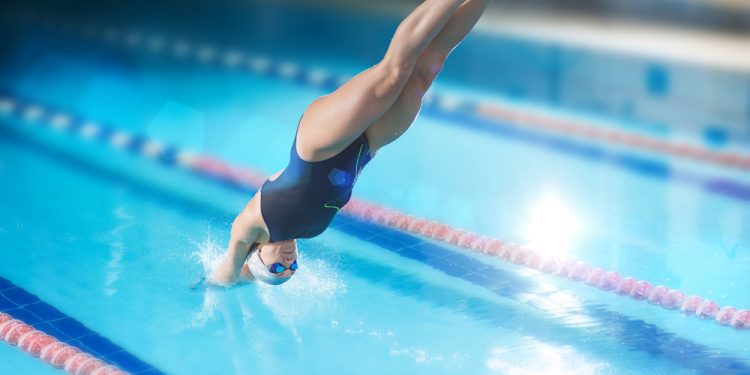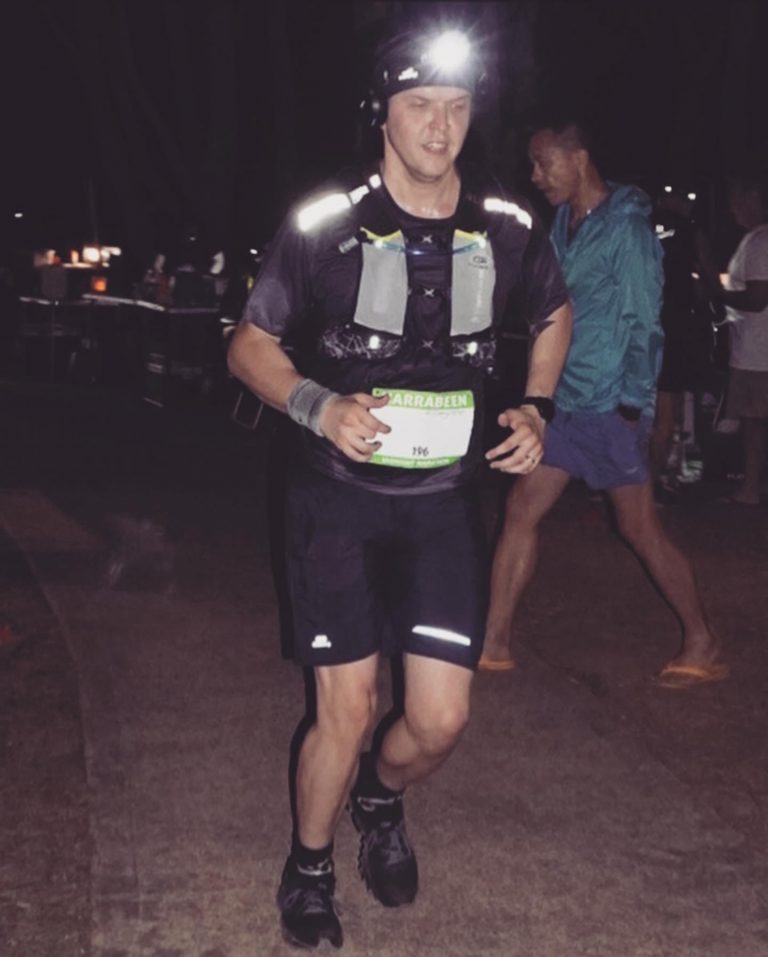A Little Introduction About Swimming And What It Did For Me
When looking for exercises that would burn the most calories, we rarely turn towards watersports. Land training, such as running and weightlifting, seems more intense and effective.
I certainly was not an advocate of swimming, especially since I was such an avid fan of running. I felt like swimming would be too easy for me. Funnily enough, I only held that belief while I hadn’t done swim training.
After my first session, though, I changed my mind. I knew that I had unfairly underestimated the effects that swimming could have both on my fitness level and my composition. I woke up the next day feeling sore in places I didn’t think was even used as I swam.
This is because swimming is considered strength training, similar to your weightlifting sessions. However, instead of using free weights, you are pulling and pushing the importance of the water with your whole body.

As you swim with one stroke, you simultaneously use your arms, legs, back, and core. Your arms and legs, of course, are used to propel you forward and keep you moving. Your core, on the other hand, is engaged the entire time because it keeps you afloat and in that streamline position.
Swimming is also considered cardio. Cardio has always been regarded as a great way to log in some burned calories. Cardio helps you train your heart to be much stronger as it pumps blood to the muscles and body parts that need more oxygen in strenuous exercises.
Not all types of swimming are equally effective, though. You can’t simply splash around in the water and expect to be fitter that way. Some certain strokes and movements will optimize the time you have in the water, increasing the number of calories burned.
Let’s dive in.
How Do You Calculate Calories Burned Through Swimming Though?
There are a lot of ways to calculate calories burned during certain activities. Studies have come out to give you an estimate, such as one done by Harvard.
Harvard Health Publishing has researched the calories burned for 30 minutes of different levels of swimming activities done by 3 people with different weights. General swimming burns the following: 180 calories for a 125-pound person, 223 calories for a 155-pound person, and 266 calories for a 185-pound person.
If you’re doing the backstroke, you’re burning a little more calories: 240 calories for a 125-pound person, 298 calories for a 155-pound person, and 355 calories for a 185-pound person.
The breaststroke goes up a notch: 300 calories for a 125-pound person, 372 calories for a 155-pound person, and 444 for a 185-pound person. These are the same numbers when you do vigorous laps and treading.
The butterfly stroke and the freestyle stroke has the same amount of calories burned: 330 calories for a 125-pound person, 409 calories for a 155-pound person, and 488 calories for a 185-pound person.
This is great and all, especially if you weigh those exact numbers. If you’re a different weight, however, I’ll give you two options. The first is to divide the given amount of calories burned by the weight of the person, then multiplying that number by your weight in pounds. This gives you an estimate of the number of calories you’ll burn if you do that particular exercise.
So, for example, if you want to compute how many calories you want to burn to do the freestyle, divide 330 calories by 125 pounds. This gives you 2.64. Multiply 2.64 by your weight, and you have the number of calories you’ll burn in 30 minutes of freestyle.
If you want a physical representation of these numbers, Harvard says that one pound of body fat equals 3,500 calories. If your goal is to lose weight, this is a great way to track how much your projected weight loss is.
The second option is to use the METs computation.
What Is MET And How Does It Help Me With Burning Calories Swimming?
According to Healthline, a MET, or metabolic equivalent, is the ratio of the metabolic rate of any activity to your resting metabolic rate. The metabolic rate is the rate at which energy is used. The higher this is, the more power you need.
Your MET as you chill out, or your resting metabolic rate, is valued at 1. Doing vigorous laps in the pool has a MET of 9.8. This means that this activity consumes 9.8 times more energy than you do at rest.
However, a MET does not equal the number of calories you burn for each activity; this must be converted to calories. According to Healthline, the formula for this is the following: METs x 3.5 x (your body weight in kilograms) / 200 = calories burned per minute.
Some important MET values for those aspiring to be swimmers: MET of 9.8 for vigorous freestyle laps, 5.8 for freestyle with moderate effort; MET of 9.5 for backstroke training, 10.3 for breaststroke training, and 13.8 for general butterfly stroke training. It’s not surprising that the butterfly stroke is high in that regard, as it requires the most effort.
If you want to get a full list of MET values for water activities, this website provides a table for you. Additionally, if you can’t be bothered to convert MET to calories on your own, you can use this online calculator by Cornell University.
Factors Affecting Calories Burned For Swimming
Not everyone will burn the same amount of calories despite doing the same activity. As seen earlier, heavier people will burn more calories than lighter ones. Weight, however, is not the only factor to consider.
Our bodies are very different from each other, so it’s quite complicated to figure out exactly how many calories you do burn. All of those methods mentioned above are estimates. To help you understand more about this, though, here’s a list of factors that might affect how many calories you burn:
- Age –
Age plays a big factor in calories burned. As you get older, you burn fewer calories each day. This is not only because of your bodily processes also slowing down and requiring fewer calories; your activity level also generally decreases as you grow older. - Weight –
As we have seen earlier, weight plays a big role in how many calories you burn while doing a certain activity. The heavier and larger-bodied you are, the more calories burned even at rest. - Body composition –
Body composition also plays a big role in determining how many calories you burn. The lower your body fat percentage — that is, the more muscle you have — the more calories you burn. - Intensity –
In terms of training, how intense you swim affects how many calories you burn. There are a lot of things you can do to make your swim training more intense. Naturally, you can increase your speed. This will require more effort, increasing energy expenditure.
You can also add more drills into your regime, like isolating your legs and arms. This definitely brings a challenge, especially if you’re starting to get used to the 4 main strokes.
You can use a kickboard to isolate your legs and a pull buoy to isolate your arms. You can also increase resistance by wearing swim fins for your feet and paddles for your hands. Both of these increase surface area, which increases the amount of water that you have to push against in order to move. This makes your swim workout much harder. - Stroke –
We have also seen earlier that the stroke affects how many calories you use up. The butterfly stroke is naturally the most energy-costing of the strokes simply because it requires more effort to move across the pool with this stroke. The stroke with the least number of calories burned would be the backstroke.
It’s quite hard to do the butterfly stroke the whole time, though, so it’s best if you add some variation to your swim training. This not only saves you some energy, but it also prevents you from getting bored of the same 4 strokes.
Conclusion
Swimming is a great way to burn some calories. The great thing about swimming is how low-impact it is, which reduces the risk of injury! This is a great way to start getting into fitness, especially if you haven’t worked out before.
Remember that although calories are an essential part of your fitness journey, especially if you have the goal to lose weight, continually counting calories might not be the most productive thing. In my opinion, you’d be better off working out and looking for exercises that you enjoy rather than spending energy on counting calories.
For those of us that don’t want to keep constant track of calories in their head or on paper, you may want to check out smartwatches for swimming as these are usually able to count
Keep in mind, also, that the calories you burn won’t count if you can’t control your intake. Swimmers have the habit of overeating after training. Watch out for this tendency, as it is really common to overeat, thus having virtually the same amount of calories (or more) as you had before you hit the pool.
The most important part of this is understanding that you have to choose the workout that you’ll enjoy in the long run. You must be consistent so that those calories burned bring results. Remember to have fun and not take calorie counting too seriously! Life is too short to live by the numbers.
The best part of all, is that you don’t need much more than swimming goggles and a swimming cap to get started. If you’re like me and always have a problem with water getting stuck in your ears, check out my post on the best swimming earplugs and if it’s the nose that bothers you I’ve even done a previous post on nose plugs for swimming purposes.
Sources:
https://www.medicalnewstoday.com/articles/319731#factors-influencing-daily-calorie-burn-and-weight-loss
https://www.shape.com/fitness/cardio/how-many-calories-does-swimming-burn
https://www.healthline.com/health/what-are-mets

Marko Rakic is a trail runner and fitness enthusiast from Sydney, Australia. He is the lead writer for The Ultimate Primate and believes the best way to live a happy life is through constantly challenging yourself.
